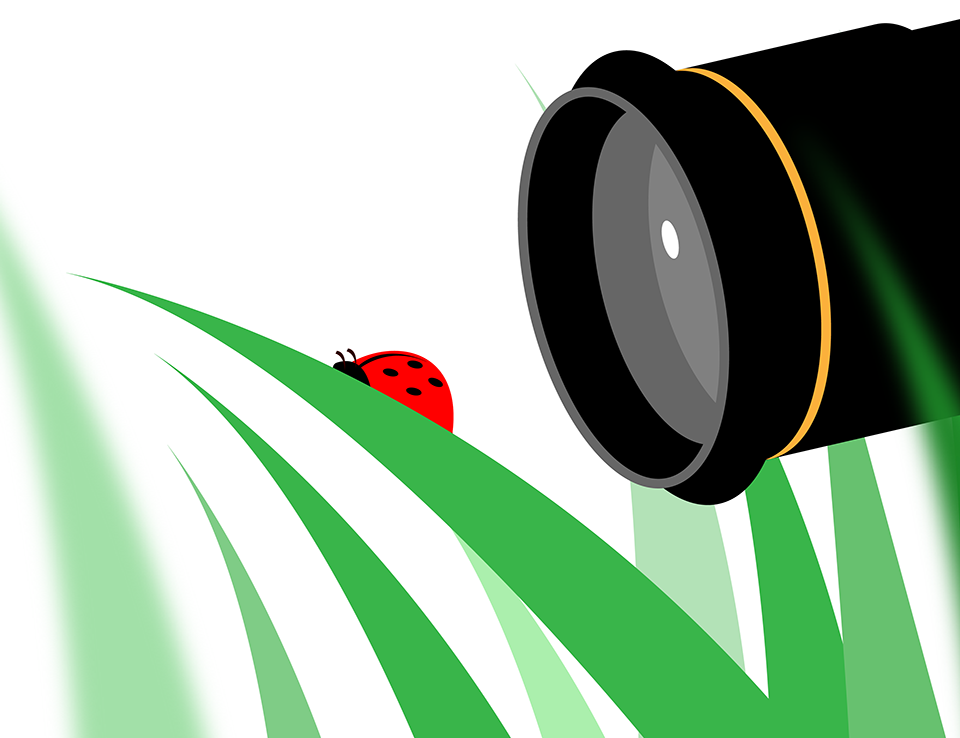9 نصائح للتصوير الماكرو للمبتدئين
9 Macro Photography Tips for Beginners

With spring arriving in the Northern Hemisphere, it’s time again for many of us to go outside in humid, buggy areas in search of creepy-crawlies. Macro photography is… peculiar, I admit that. But anyone who’s tried this genre also knows its allure. Navigate some technical hurdles and heed the mosquitos, and you’ll find whole universes of photographs to capture in your backyard. If you’re just beginning macro photography, the following tips will show you where to start.
Table of Contents
مع حلول الربيع في نصف الكرة الشمالي، حان الوقت مرة أخرى للكثير منا للخروج في مناطق رطبة وعربات التي تجرها الدواب بحثًا عن الحشرات الزاحفة. تصوير الماكرو... غريب، أعترف بذلك. لكن أي شخص جرب هذا النوع يعرف أيضًا جاذبيته. تجاوز بعض العقبات التقنية وقم بإخفاء البعوض، وستجد عوالم كاملة من الصور الفوتوغرافية التي يمكنك التقاطها في الفناء الخلفي لمنزلك. إذا كنت قد بدأت للتو في تصوير الماكرو، فستوضح لك النصائح التالية من أين تبدأ.
جدول المحتويات
تعلم سلوك الأخطاء ابدأ عند شروق الشمس أخبر قصة استخدم الفلاش قم بتوزيع نغمة مصدر الضوء لأسفل اضبط الفلاش تلقائيًا (TTL) قم بالتركيز بشكل صحيح يدويًا (أحيانًا) تخلص من بقع الغبار
9 Macro Photography Tips for Beginners

With spring arriving in the Northern Hemisphere, it’s time again for many of us to go outside in humid, buggy areas in search of creepy-crawlies. Macro photography is… peculiar, I admit that. But anyone who’s tried this genre also knows its allure. Navigate some technical hurdles and heed the mosquitos, and you’ll find whole universes of photographs to capture in your backyard. If you’re just beginning macro photography, the following tips will show you where to start.
Table of Contents
- Learn Bug Behavior
- Start at Sunrise
- Tell a Story
- Use a Flash
- Diffuse Your Light Source
- Tone Down Your Flash
- Set Auto (TTL) Flash Correctly
- Focus Manually (Sometimes)
- Get Rid of Dust Spots
مع حلول الربيع في نصف الكرة الشمالي، حان الوقت مرة أخرى للكثير منا للخروج في مناطق رطبة وعربات التي تجرها الدواب بحثًا عن الحشرات الزاحفة. تصوير الماكرو... غريب، أعترف بذلك. لكن أي شخص جرب هذا النوع يعرف أيضًا جاذبيته. تجاوز بعض العقبات التقنية وقم بإخفاء البعوض، وستجد عوالم كاملة من الصور الفوتوغرافية التي يمكنك التقاطها في الفناء الخلفي لمنزلك. إذا كنت قد بدأت للتو في تصوير الماكرو، فستوضح لك النصائح التالية من أين تبدأ.
جدول المحتويات
تعلم سلوك الأخطاء ابدأ عند شروق الشمس أخبر قصة استخدم الفلاش قم بتوزيع نغمة مصدر الضوء لأسفل اضبط الفلاش تلقائيًا (TTL) قم بالتركيز بشكل صحيح يدويًا (أحيانًا) تخلص من بقع الغبار

تعليق